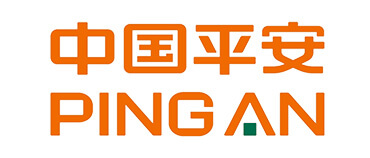In-depth: Underwriting innovation
Key points:
- Traditional underwriting approaches are hindering effective data gathering, especially in the aftermath of incidents, as outlined by Guidewire
- When gathering personal data from consumers a consensual partnership needs to develop between insurers and consumers – We look at examples from the US
- Chinese insurers have access to a number of common data sources, but innovation is still taking place, we look at examples including a stealth status InsurTech hoping to launch in 2022 that has been approved to bring a technique that detects pulse colour changes beneath the skin using a smartphone for term life insurance, here
The future of underwriting is all a question of data. Which data you have access to and how you then use it. As a business insurance lives and dies on the quality of its underwriting. And if one thing is certain about the advance towards a digital insurance industry it is that technology has the capability of greatly improving the understanding and measurement of risk.
Missed opportunities
As in every other area of digital transformation, strategically, data-driven underwriting will be faster and more efficient.
Consumers are also set to benefit through individual tailored products and services that fulfil their specific needs and risks. Much underwriting is still done on paper or is intermediated by an underwriter’s eyeballs. That’s fine when it is assessing things with many moving parts, but for the mass market, it doesn’t cut it any more.
It leaves considerable opportunity on the table for the gathering of data and the development of analytics to inform the application of artificial intelligence and machine learning, which, in time, could greatly enhance underwriting.
In some cases, it’s not that data is unavailable, but that it simply isn’t gathered. A good example of this is covered by a Guidewire report into the obstacles facing cyber risk underwriting. It shows the structures used by insurers and their clients to manage the aftermath of cyber breaches is inhibiting the development of better quality data gathering. The weakness in data is being reinforced by internal industry processes, holding back cyber risk underwriting improvements.
The traditional underwriting approach – particularly for health or life – is changing to a model where insurers offer discounts for policyholders managing health and assisting with data gathering. This is driven in part by a changing dynamic in consumer behaviour, and technologists are convinced they can deliver design processes for managing significant levels of cover. In other words, full underwriting for the policyholders.
The advantage of analytics is that it will allow developers to introduce gamification into the underwriting technology, which will provide greater opportunities for the visualisation of risks. The key drivers necessary to make this a reality require partnerships not only between insurers and third parties, but also between insurers, their third parties, and the consumers they gather data from.
The API infrastructure that will be deployed must have client consent for data sharing hardwired into it if data sharing is going to be effective. This will make it more palatable to regulatory bodies keen to protect consumers and their data.
There are three essential elements that must be focused on if data driven underwriting is to be successful – data, consent and governance.
The power of data consent
The gathering of personal data is already underway in the health care sector with Human API collecting data from US citizens. And there’s nothing underhand about this. With the explicit consent of the user, it is able to retrieve digital health data, whether electronic health records, lab data, data from wearable tech, etc. It then structures and standardises it into a what it calls a ‘health vault’ for the user.
It has access to potential data on 220 million individuals across the USA and covers 85% of the hospital network. This type of data can be used to help individuals improve awareness of their own health, reducing risk for the customer while allowing more sophisticated underwriting by the insurer.
Another example of data driven underwriting from the US is Haven Life, an in house start up that offers term life insurance policies by Mass Mutual.
It is algorithm driven and underpinned by machine learning, which analyses data provided by either clients or customers, as well as third-party data gathered in real time. It analyses health information and can make a decision within 40 seconds, without the need for any intrusive medical examinations. Not having to submit to any medical exams greatly improves customer engagement.
Some will still have to have a medical examination and Haven has a secondary platform for the review of results. This combines the data already gathered with the medical data in order to reach a final decision.
Big data gets personal
One of the interesting innovations makes use of data from the financial services industry offering a window into the health of policyholders. In the US, RGA has developed True Risk using credit data in the underwriting process for life policies.
In addition to pulling in demographic and personal data, it draws on credit data – credit cards, personal loans, mortgages, etc – for the individual, plus any public records on their financial status, such as tax liabilities, legal judgments against them, or bankruptcies.
Tax returns, specific purchases, income, data from other accounts and race are excluded. But RGA has shown it can give a strong indication for predicting mortality with a study of 15 million insured lives. Another example where data will drive improvements in underwriting is the booming area of cyber risk. A report by Guidewire Science Risk Analytics rejects the notion that there isn’t enough data to enable insurers to better underwrite risk in cyber space. Instead, there is a lack of data being extracted from the actuarial data generated around cyber incidents. This, in fact, is generally data left on the ‘cutting room floor’ after digital forensics has already been deployed.
There are a number of reasons for this, the largest being the legal structure put in place after a breach between the insurer and the client. This has been challenged by courts in the healthcare sector and also the National Pipeline incident earlier this year. Courts are increasingly mindful of the data that may be captured but is currently protected by legal relationships.
Chinese insurers seek new ideas
There are three common data sets that Chinese insurers have access to. The first is their own gathered from claims and underwriting systems, or agency related information from their underwriting engines.
The second data comes from partners. Most partnerships are with banks and wealth managers. These partners can be quite circumspect with their data and will not give insurers access to any great degree of granularity. Instead, by way of an agreed methodology or model, they provide aggregated insights, which insurers must translate for their underwriting journey and will generally consist of indicators or red flags rather than deep insights.
The third data set comes from non-traditional sources, concerning for instance, lifestyle. These data can be used to inform product development or pricing. An alternative source is credit risk, though this can be a sensitive subject and might be frowned upon in the US, for instance. However, it is an available data set in Asia and is being used to some extent in China.
Another useful source is electronic health record (EHR) data, though in China – and Asia more widely – this is more likely to be health check-up records, rather than EHRs, because the EHR landscape in Asia is a lot more fragmented.
In Korea, Japan and China, OCR companies are converting health check records into digital data to be used in underwriting. It is only developing, but rapidly in both Japan and China.
Three steps to underwriting nirvana
These three data sets must be combined, understood and then converted into making risk insights. Care must be taken when using partner data, but that is covered with the usual B2B contractual arrangement. However, consumer data requires consent.
Even though the use of health records is increasing in China, coverage is not comprehensive, and covers only certain cities or provinces. Some tech companies are offering an OCR/NLP service, converting from paper or PDF to digital. There are also health check organisations with access to – or collaboration with – certain hospitals. They are already integrated with the back end systems and can pull the data directly from selected hospitals.
Unlike the example of Human API in the US, where individuals are allowed to store their medical data from where it may be shared in a standardised form, in China, people tend to receive their health check reports via WeChat.
Insurers must build a process to get the consumer to provide the data, create a common container and then allow for the data to be shared into insurance companies.
China’s health and wellness products are relatively unsophisticated compared to some other markets where digital biomarkers and lifestyle data are more integrated into risk insight or dynamic pricing.
The most popular products are the ones that reward the individuals for hitting targets, such as 10,000 steps over a set period.
Can underwriting innovation deliver?
Innovations from within the underwriting function have long been promised but seldom delivered. To understand the changes in this sector, it is worth considering the differing degrees of change that exist within specific lines of insurance.
First, simple products such as travel, personal accident and auto insurance have already benefited from automated underwriting to a certain extent. Companies such as Metro Mile in the US, Xiaoyusan in China, and Blink in Europe have already demonstrated this.
Second, critical illness and complex health insurance products that include cover for those with chronic diseases or pre-existing conditions.
Finally, it remains to be seen whether the host of aspirational technologies including AI, blockchain and advanced analytics will be able to automate underwriting tasks relating to long term life & health lines.
The notion of digital underwriting has largely been confined to simple products such as auto, personal accident and travel insurance.
As discussed above, there has been a move to include health records, but this year has been notable for the Chinese government’s willingness to intervene to protect consumer data that is held, and used, by internet companies.
It remains to be seen how much impact this may have on the development of digital underwriting.
Chinese innovators
DTI provides life and health insurers with an automated underwriting engine for term life and critical illness products. Although there are many similar ‘underwriting engines’ on the market, DTI is the first to introduce such capability inside WeChat. It allows insurers to quote/bind and transact within WeChat. The technology is based on a decision tree which DTI has developed over four years and imbued with factors now allowed to be considered when pricing life and health insurance.
CheChe Tech is a long established auto insurance intermediary based in Beijing. Since auto insurance pricing was deregulated in 2020, it is now possible to consider driving behaviour statistics in China.
However, more flexible pricing has deepened an already loss making sector. This has forced CheChe Tech to work with thousands of independent mechanics and car dealerships to keep loss rates within a tolerable range.
Stealth entrant with new technology
Finally, a stealth status InsurTech that hopes to launch in mid-2022 has been approved to bring a new underwriting technique for term life insurance in China. The approach will allow life insurers to engage purely digital underwriting through a technology called ‘remote photoplethysmography technology’ (rPPG). The technique detects pulse colour changes beneath the skin using a smartphone video camera in around 90 seconds. It also examines parts of the human face to measure subtle changes in light absorption from the skin and extract physiological signals. These signals are converted into a set of important health indicators.
This may reveal a wide range of physiological metrics – including heart rate variability (HRV), respiration rate, oxygen saturation, stress level and blood pressure – that can be useful for underwriting.
For example, there have been numerous studies demonstrating that HRV could be used as a factor to determine mortality risk, which could enhance risk stratification in the underwriting process. The tool could be used to improve the process of stratifying high-risk individuals, allowing the insurer/underwriter to gain better visibility into managing the risk of their insurance pool.
What comes next
The world of digital underwriting is ripe for change and a number of insurers, reinsurers and InsurTechs are pushing for the industry to abandon its outdated methods in favour of a new, data driven approach.
The opportunity to combine data sets into risk insights offers exciting possibilities. And it will be interesting to see how far Chinese regulators develop their consumer protection policies and whether they follow the data protection actions taken in Europe and the US.

























































